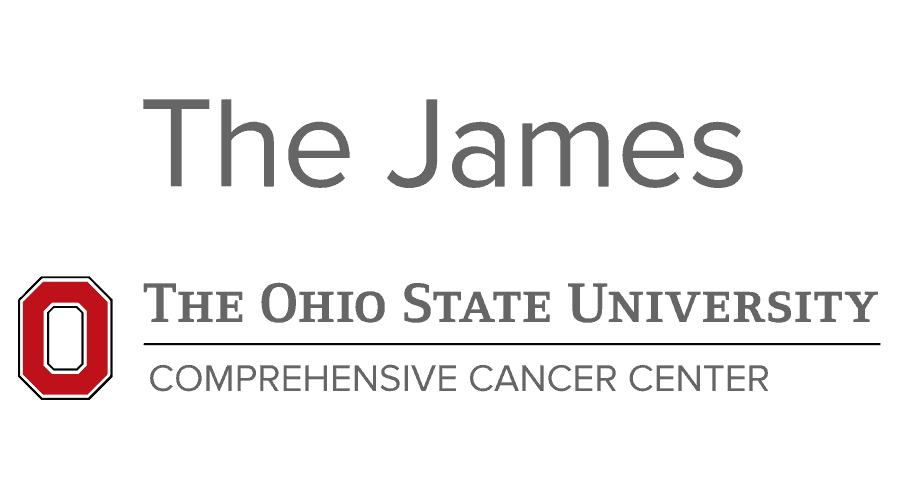Proteomics Shared Resource
Please remember to cite the Shared Resources!
Research reported in this publication was supported by The Ohio State University Comprehensive Cancer Center and the National Institutes of Health under grant number P30 CA016058.
We thank the XX Shared Resource at The Ohio State University Comprehensive Cancer Center, Columbus, OH for (XX)
About Us: (back to top)
The Proteomics Shared Resource (PSR) provides OSUCCC investigators access to advanced mass spectrometry instrumentation and analysis for protein identification, characterization, and quantification.
Using a variety of analytical platforms, researchers are able to discover novel differentially expressed proteins in serum, urine, BAL fluid, saliva, frozen tissues, cell culture media, formalin-fixed tissues and cell lysates via labeling or label free approaches. The PSR is part of the Campus Chemical Instrument Center managed by The Ohio State University Office of Research, with significant operational management by the OSUCCC – James. The PSR is located in the Biomedical Research Tower. The PSR is an interdisciplinary unit that provides cancer researchers with technical expertise and state-of-the-art instrumentation needed to identify proteins, protein modifications, protein interactions and protein biomarkers, as well as protein quantitation studies in cancer samples.
250 Biomedical Research Tower
460 W. 12th Ave.
Columbus, OH 43210
Phone: 614-247-8789 (Lab)
Fax: 614-292-5955
Availability: Monday-Friday, 8 a.m.-5 p.m.
Meet the Team: (back to top)


Technical Director: Liwen Zhang, PhD
Associate Director of CCIC MSP: Arpad Somogyi , PhD
Senior Research Associate: Sophie Harvey, PhD
Research Associate: Matthew Bernier, PhD
Research Scientist: Gong Wu, PhD
Research Scientist: Chengyu Gao, PhD
Research Scientist: Aktham Mestareehi, PhD
Program Manager: Laura Vanarsdale, MS
Business Operations Analyst: Miriam Guirguis, MBA
Business Operations Senior Analyst: TBD
Available Services: (back to top)
- Protein Sample Preparation
- Protein Identification
- Quantitative Proteomics
- Molecular Weight Measurement and Tandem MS Analysis
- MALDI Imaging
- LC-MS
- Post-Translational Modification Analyses
- Consultation
Click here for full list of services and fees
Protein Sample Preparation: The PSR accepts cell pellets, tissue and biological fluids for proteomic analysis, offering all the protein extraction services to properly prepare samples for downstream analysis.
Protein Identification: The PSR provides identification(s) for protein or a mixture of proteins in either solution or gel phase using a bottom-up approach. Protein in solution or in gel can be digested and the peptides analyzed by nano LC-MS/MS. Peptide fragments generated by tandem MS are searched on MASCOT to internally sequence the protein. This method produces numerous sequences from low fmole of material and enables us to identify hundreds, even thousands, of proteins in a single run. Protein Identification includes these steps:
- Enzyme Digestions: Protease digestion breaks large proteins into small peptides that are more amenable to mass spectrometry analysis. Trypsin predominantly cleaves peptide chains at the carboxyl side of the amino acids lysine or arginine, generating positively charged peptides that fragment well by CID or HCD. Thus, trypsin is the most common enzyme used for proteomics. However, chymotrypsin, Arg-C, Lys-C, Asp-N and many other enzymes can be used as needed.
- LC/MSMS analysis: The digested peptides are separated by nano C18 reverse phase column before being sent to the mass spectrometer for further analysis. A Thermo orbitrap Fusion, Thermo QE Plus and Bruker timsTOF Pro is used for acquiring data. The length of LC gradients will be determined by the complexity of the final samples analyzed by MS/MS.
- Database Search on MASCOT: Collected data is searched on MASCOT against the latest version of Uniprot database. Data can also be searched against databases provided by the researchers in fasta format. MASCOT results will be compiled using Scaffold so the users can view and compare the data more easily.
- Sample fractionation (optional): For complex mixtures, the PSR recommends performing pre-fractionation prior to LC/MSMS analysis. In this approach, the complex mixtures of proteins are digested and separated on an online or offline fractionation column first to reduce the complexity of samples submitted to LC/MSMS analysis. Each fraction is collected and then separated again by a separation column for LC/MSMS analysis, separately; the results are then merged prior to bioinformatics analysis. As many as several thousands of proteins in one sample have been identified using this approach
Quantitative Proteomics: The PSR offers both gel-based and non-gel-based methods to monitor protein differentiation expressions between samples. The PSR provides several approaches for the quantitative proteomics investigation.
Molecular Weight Measurement and Tandem MS Analysis: The PSR provides both accurate and nominal molecular weight measurements using both electrospray and MALDI. ESI is used to protonate/deprotonate small molecules, peptides and small intact proteins to determine their molecular weights. MALDI-TOF(TOF) analysis is available for small peptides and for the MS analysis of intact proteins, lipids, small DNA fragments and synthetic polymers.
MALDI Imaging: MALDI tissue image is a mass spectrometric imaging technique in which mass spectrometry is used to visualize and compare the spatial distribution of proteins, peptides, drug candidate compounds and their metabolites in thin slices of tissue samples. Briefly, a suitable MALDI matrix is sprayed on a thin slice of the tissue prior to mass spectrometric analysis. The spatial distribution of molecular species of the tissue is recorded by MALDI mass spectrometer and image processing software is used to visualize, compare and characterize the optical image of the sample. MALDI imaging is available on a Bruker Ultraflextreme MALDI TOF-TOF instrument (large molecules, e.g., proteins) and on the Bruker 15 T FT-ICR ultrahigh resolution instrument (small molecules with very accurate mass measurements).
LC-MS: LC-MS is a very effective technique for combining the separation and identification of certain compounds. Combining chromatography with mass spectrometry allows the chromatographer to "see inside" the chromatographic peak and to resolve co-eluting compounds of different molecular weights. Molecular weight information can identify predicted unknowns with better certainty and identify true unknowns by obtaining fragmentation information from CID and searching against commercial databases of spectra.
Post-Translational Modification Analyses: Post-translational modification (PTM) is the chemical modification of a protein after translation. These modifications induce a shift in mass, therefore can be identified using mass spectrometry. Common PTM analysis includes phosphorylation, methylation, acetylation and oxidation. Samples may be enriched prior to digestion and then analyzed on the ultra-high-resolution Orbitrap Fusion or timsTOF PRO using LC-MS/MS to determine the sequence of the peptide and the location of the modification. The PSR has extensive experience working with researchers to identify and characterize customized post-translational modifications, amino acid mutations and peptide crosslinks.
Consultation: PSR personnel provide assistance to individual investigators with the design and implementation of proteomics studies, in particular those involving mass spectrometry. The benefits of mass spectrometry-based proteomics methods are numerous, including routine femtomole range sensitivity, rapid analysis speed and, most importantly, the ability to precisely and accurately determine protein identity and characterize modifications. Using methods like differential gel electrophoresis (DIGE) and Label -Free Quantitation, the PSR can also track the entire differential output of proteins and protein complexes by systems under disease, drug or environmental challenge. The PSR provides a unique shared resource that is both cutting-edge and affordable for the entire OSUCCC membership.
Please remember to cite the Shared Resources!
Research reported in this publication was supported by The Ohio State University Comprehensive Cancer Center and the National Institutes of Health under grant number P30 CA016058.
We thank the XX Shared Resource at The Ohio State University Comprehensive Cancer Center, Columbus, OH for (XX)
